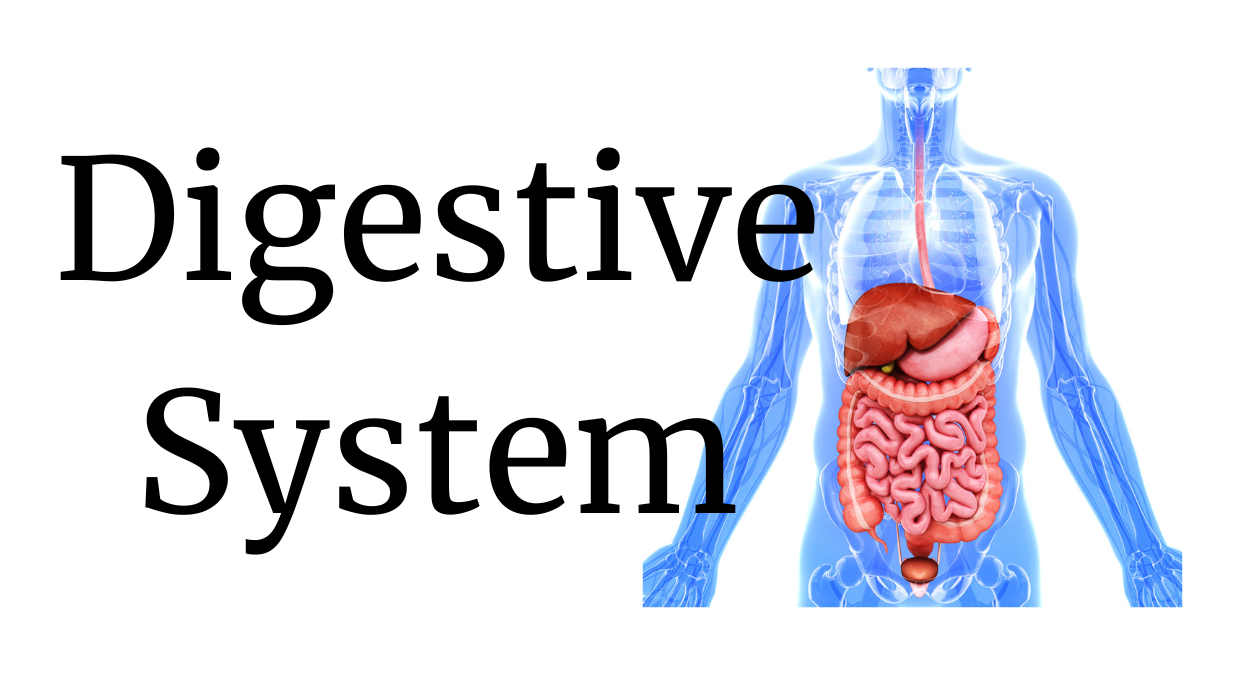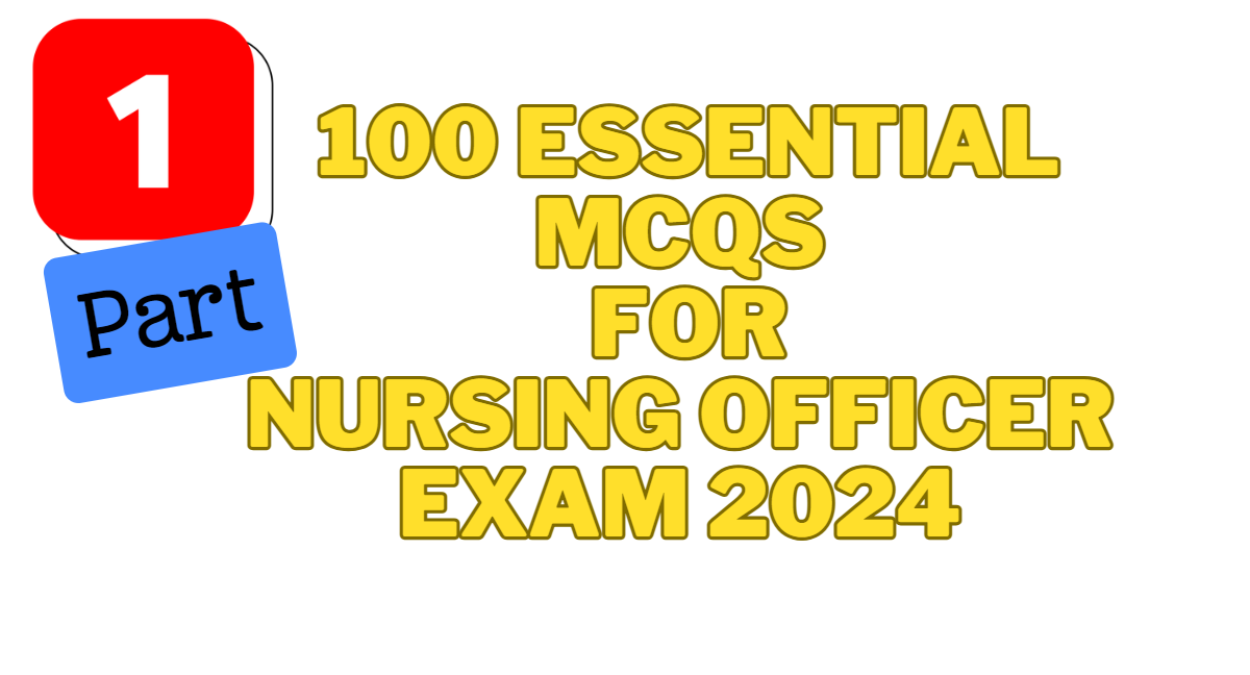Mastering Anatomy and Physiology: Top 100 Multiple-Choice Questions (MCQs) for Nursing| Top 100 multiple-choice questions (MCQs) on Anatomy and Physiology for nursing
Introduction: Anatomy and Physiology are foundational subjects in nursing education. A strong understanding of the human body’s structure and function is essential for nurses to provide optimal patient care. To help nursing students enhance their knowledge and test their understanding, we have compiled a list of the top 100 multiple-choice questions (MCQs) on Anatomy and Physiology.
These questions cover various systems and concepts, allowing students to assess their knowledge and identify areas for improvement. Let’s dive into this comprehensive collection of MCQs!
Please note that these answers are based on standard knowledge in anatomy and physiology, but it’s always recommended to refer to reliable sources and consult with subject experts for accurate information.
Here are 100 multiple-choice questions (MCQs) on Anatomy and Physiology for nursing:
1. Which of the following is the study of the structure of the human body?
a) Anatomy
b) Physiology
c) Pathophysiology
d) Pharmacology
Answer: 1. a) Anatomy
2. Which of the following is the study of the function of the human body?
a) Anatomy
b) Physiology
c) Pathophysiology
d) Pharmacology
Answer: 2. b) Physiology
3. The study of how diseases disrupt normal body functions is known as:
a) Anatomy
b) Physiology
c) Pathophysiology
d) Pharmacology
Answer: 3. c) Pathophysiology
4. Which of the following terms refers to the maintenance of a stable internal environment in the body?
a) Homeostasis
b) Metabolism
c) Hormones
d) Respiration
Answer: 4. a) Homeostasis
5. The anatomical term “posterior” refers to:
a) Front of the body
b) Back of the body
c) Top of the body
d) Bottom of the body
Answer: 5. b) Back of the body
6. The anatomical term “superior” refers to:
a) Towards the head or upper part of the body
b) Towards the feet or lower part of the body
c) Towards the front of the body
d) Towards the back of the body
Answer: 6. a) Towards the head or upper part of the body
7. The largest organ in the human body is the:
a) Liver
b) Heart
c) Brain
d) Skin
Answer: 7. d) Skin
8. Which of the following is responsible for transporting oxygen and nutrients to body tissues?
a) Heart
b) Lungs
c) Liver
d) Kidneys
Answer: 8. a) Heart
9. The process by which cells break down food and convert it into energy is called:
a) Respiration
b) Digestion
c) Metabolism
d) Excretion
Answer: 9. c) Metabolism
10. The anatomical term “proximal” refers to:
a) Closer to the center of the body
b) Farther away from the center of the body
c) Closer to the surface of the body
d) Farther away from the surface of the body
Answer: 10. a) Closer to the center of the body
11. The muscular organ that pumps blood throughout the body is the:
a) Liver
b) Heart
c) Brain
d) Stomach
Answer: 11. b) Heart
12. The part of the brain responsible for controlling voluntary movements and coordination is the:
a) Cerebrum
b) Cerebellum
c) Brainstem
d) Medulla oblongata
Answer: 12. b) Cerebellum
13. The process by which oxygen enters the body and carbon dioxide is expelled is known as:
a) Respiration
b) Digestion
c) Circulation
d) Excretion
Answer: 13. a) Respiration
14. The anatomical term “distal” refers to:
a) Closer to the center of the body
b) Farther away from the center of the body
c) Closer to the surface of the body
d) Farther away from the surface of the body
Answer: 14. b) Farther away from the center of the body
15. The part of the digestive system where water is absorbed from undigested food is the:
a) Stomach
b) Small intestine
c) Large intestine
d) Liver
Answer: 15. c) Large intestine
16. Which of the following is responsible for filtering waste products from the blood and producing urine?
a) Heart
b) Lungs
c) Liver
d) Kidneys
Answer: 16. d) Kidneys
17. The anatomical term “inferior” refers to:
a) Towards the head or upper part of the body
b) Towards the feet or lower part of the body
c) Towards the front of the body
d) Towards the back of the body
Answer: 17. b) Towards the feet or lower part of the body
18. The process by which nutrients are broken down and absorbed into the bloodstream is called:
a) Respiration
b) Digestion
c) Circulation
d)Excretion
Answer: 18. b) Digestion
19. The part of the respiratory system where gas exchange occurs is the:
a) Trachea
b) Bronchi
c) Lungs
d) Diaphragm
Answer:19. c) Lungs
20. The anatomical term “lateral” refers to:
a) Towards the midline of the body
b) Away from the midline of the body
c) Towards the front of the body
d) Towards the back of the body
Answer: 20. b) Away from the midline of the body
21. The part of the nervous system responsible for transmitting electrical signals throughout the body is:
a) Brain
b) Spinal cord
c) Nerves
d) Muscles
Answer: 21. c) Nerves
22. The hormone responsible for regulating blood sugar levels is:
a) Insulin
b) Estrogen
c) Testosterone
d) Thyroid hormone
Answer: 22. a) Insulin
23. The part of the urinary system that stores urine before it is eliminated from the body is the:
a) Kidneys
b) Ureters
c) Bladder
d) Urethra
Answer: 23. c) Bladder
24. The process by which the body eliminates waste products is called:
a) Respiration
b) Digestion
c) Circulation
d) Excretion
Answer: 24. d) Excretion
25. The anatomical term “anterior” refers to:
a) Front of the body
b) Back of the body
c) Top of the body
d) Bottom of the body
Answer: 25. a) Front of the body
26. The part of the digestive system where food is mechanically and chemically broken down is the:
a) Stomach
b) Small intestine
c) Large intestine
d) Liver
Answer: 26. a) Stomach
27. The part of the cardiovascular system responsible for carrying oxygenated blood to the body tissues is the:
a) Arteries
b) Veins
c) Capillaries
d) Lymphatic vessels
Answer: 27. a) Arteries
28. The anatomical term “medial” refers to:
a) Towards the midline of the body
b) Away from the midline of the body
c) Towards the front of the body
d) Towards the back of the body
Answer: 28. a) Towards the midline of the body
29. The part of the nervous system that controls voluntary movements is the:
a) Central nervous system
b) Peripheral nervous system
c) Autonomic nervous system
d) Somatic nervous system
Answer: 29. d) Somatic nervous system
30. The hormone responsible for regulating metabolism is:
a) Insulin
b) Estrogen
c) Testosterone
d) Thyroid hormone
Answer: 30. c) Thyroid hormone
These are the first 30 MCQs on Anatomy and Physiology for nursing. Remember, you can customize the questions further or add more based on the level of difficulty you desire.
Here are 70 more multiple-choice questions (MCQs) on Anatomy and Physiology for nursing:
31. The part of the respiratory system that connects the throat to the lungs is the:
a) Trachea
b) Bronchi
c) Lungs
d) Diaphragm
Answer: 31. a) Trachea
32. The process by which cells convert oxygen and glucose into energy is called:
a) Respiration
b) Digestion
c) Metabolism
d) Excretion
Answer: 32. a) Respiration
33. The anatomical term “superficial” refers to:
a) Towards the midline of the body
b) Away from the midline of the body
c) Towards the surface of the body
d) Towards the deep layers of the body
Answer: 33. c) Towards the surface of the body
34. The part of the nervous system responsible for transmitting signals from the body to the brain is:
a) Brain
b) Spinal cord
c) Nerves
d) Muscles
Answer: 34. c) Nerves
35. The hormone responsible for regulating the sleep-wake cycle is:
a) Melatonin
b) Estrogen
c) Testosterone
d) Adrenaline
Answer: 35. a) Melatonin
36. The part of the urinary system that carries urine from the kidneys to the bladder is the:
a) Kidneys
b) Ureters
c) Bladder
d) Urethra
Answer: 36. b) Ureters
37. The process by which the body breaks down food into simpler substances is called:
a) Respiration
b) Digestion
c) Circulation
d) Excretion
Answer: 37. b) Digestion
38. The anatomical term “deep” refers to:
a) Towards the midline of the body
b) Away from the midline of the body
c) Towards the surface of the body
d) Towards the deep layers of the body
Answer: 38. d) Towards the deep layers of the body
39. The part of the reproductive system where fertilization takes place is the:
a) Ovaries
b) Uterus
c) Fallopian tubes
d) Vagina
Answer: 39. c) Fallopian tubes
40. The part of the cardiovascular system responsible for carrying deoxygenated blood back to the heart is the:
a) Arteries
b) Veins
c) Capillaries
d) Lymphatic vessels
Answer: 40. b) Veins
41. The anatomical term “ventral” refers to:
a) Front of the body
b) Back of the body
c) Top of the body
d) Bottom of the body
Answer: 41. a) Front of the body
42. The part of the digestive system that produces bile to aid in digestion is the:
a) Stomach
b) Small intestine
c) Liver
d) Pancreas
Answer: 42. c) Liver
43. The part of the endocrine system responsible for regulating calcium levels in the body is the:
a) Pituitary gland
b) Thyroid gland
c) Parathyroid glands
d) Adrenal glands
Answer: 43. c) Parathyroid glands
44. The part of the urinary system that filters waste products from the blood is the:
a) Kidneys
b) Ureters
c) Bladder
d) Urethra
Answer: 44. a) Kidneys
45. The process by which waste products are removed from the body through sweat and urine is called:
a) Respiration
b) Digestion
c) Circulation
d) Excretion
Answer: 45. d) Excretion
46. The anatomical term “dorsal” refers to:
a) Front of the body
b) Back of the body
c) Top of the body
d) Bottom of the body
Answer: 46. b) Back of the body
47. The part of the reproductive system that produces eggs in females is the:
a) Ovaries
b) Uterus
c) Fallopian tubes
d) Vagina
Answer: 47. a) Ovaries
48. The part of the cardiovascular system responsible for carrying oxygenated blood from the lungs to the heart is the:
a) Arteries
b)Veins
c) Capillaries
d) Lymphatic vessels
Answer: 48. a) Arteries
49. The anatomical term “plantar” refers to:
a) Sole of the foot
b) Palm of the hand
c) Back of the hand
d) Top of the foot
Answer: 49. a) Sole of the foot
50. The part of the nervous system responsible for controlling involuntary functions like heart rate and digestion is the:
a) Central nervous system
b) Peripheral nervous system
c) Autonomic nervous system
d) Somatic nervous system
Answer: 50. c) Autonomic nervous system
51. The hormone responsible for regulating blood pressure is:
a) Insulin
b) Estrogen
c) Testosterone
d) Adrenaline
Answer: 51. d) Adrenaline
52. The part of the urinary system where urine is temporarily stored before it is eliminated from the body is the:
a) Kidneys
b) Ureters
c) Bladder
d) Urethra
Answer: 52. d) Urethra
53. The process by which the body absorbs nutrients from digested food is called:
a) Respiration
b) Digestion
c) Absorption
d) Excretion
Answer: 53. c) Absorption
54. The anatomical term “cranial” refers to:
a) Towards the head
b) Towards the feet
c) Towards the front of the body
d) Towards the back of the body
Answer: 54. a) Towards the head
55. The part of the reproductive system that produces sperm in males is the:
a) Testes
b) Prostate gland
c) Vas deferens
d) Penis
Answer: 55. a) Testes
56. The part of the cardiovascular system responsible for carrying oxygenated blood to the heart is the:
a) Arteries
b) Veins
c) Capillaries
d) Lymphatic vessels
Answer: 56. a) Arteries
57. The anatomical term “caudal” refers to:
a) Towards the head
b) Towards the feet
c) Towards the front of the body
d) Towards the back of the body
Answer: 57. b) Back of the body
58. The part of the endocrine system responsible for regulating metabolism is the:
a) Pituitary gland
b) Thyroid gland
c) Adrenal glands
d) Pancreas
Answer: 58. b) Thyroid gland
59. The part of the urinary system that carries urine from the bladder out of the body is the:
a) Kidneys
b) Ureters
c) Bladder
d) Urethra
Answer: 59. d) Urethra
60. The process by which the body eliminates carbon dioxide is called:
a) Respiration
b) Digestion
c) Circulation
d) Excretion
Answer: 60. a) Respiration
61. The anatomical term “cephalic” refers to:
a) Towards the head
b) Towards the feet
c) Towards the front of the body
d) Towards the back of the body
Answer: 61. a) Towards the head
62. The part of the reproductive system that provides a protective environment for a developing fetus is the:
a) Ovaries
b) Uterus
c) Fallopian tubes
d) Vagina
Answer: 62. b) Uterus
63. The part of the cardiovascular system responsible for carrying oxygenated blood to the body tissues is the:
a) Arteries
b) Veins
c) Capillaries
d) Lymphatic vessels
Answer: 63. c) Capillaries
64. The anatomical term “lumbar” refers to:
a) Towards the head
b) Towards the feet
c) Towards the front of the body
d) Towards the back of the body
Answer: 64. d) Towards the back of the body
65. The part of the endocrine system responsible for producing hormones that regulate growth and development is the:
a) Pituitary gland
b) Thyroid gland
c) Adrenal glands
d) Pancreas
Answer: 65. b) Thyroid gland
66. The part of the urinary system where filtration of waste products from the blood occurs is the:
a) Kidneys
b) Ureters
c) Bladder
d) Urethra
Answer: 66. a) Kidneys
67. The process by which the body breaks down glucose to produce energy is called:
a) Respiration
b) Digestion
c) Metabolism
d) Excretion
Answer: 67. c) Metabolism
68. The anatomical term “inferior” refers to:
a) Above
b) Below
c) Towards the front of the body
d) Towards the back of the body
Answer: 68. b) Below
69. The part of the reproductive system that produces eggs in females is the:
a) Ovaries
b) Uterus
c) Fallopian tubes
d) Vagina
Answer: 69. a) Ovaries
70. The part of the cardiovascular system responsible for carrying deoxygenated blood from the heart to the lungs is the:
a) Arteries
b) Veins
c) Capillaries
d) Lymphatic vessels
Answer: 70. b) Veins
71. The anatomical term “posterior” refers to:
a) Front of the body
b) Back of the body
c) Top of the body
d) Bottom of the body
Answer: 71. b) Back of the body
72. The part of the digestive system that absorbs nutrients from digested food into the bloodstream is the:
a) Stomach
b) Small intestine
c) Large intestine
d) Liver
Answer: 72. b) Small intestine
73. The part of the endocrine system responsible for producing insulin and glucagon to regulate blood sugar levels is the:
a) Pituitary gland
b) Thyroid gland
c) Adrenal glands
d) Pancreas
Answer: 73. d) Pancreas
74. The part of the urinary system that filters waste products from the blood is the:
a) Kidneys
b) Ureters
c) Bladder
d) Urethra
Answer: 74. a) Kidneys
75. The process by which waste products are eliminated from the body through urine and feces is called:
a) Respiration
b) Digestion
c) Circulation
d) Excretion
Answer: 75. d) Excretion
76. The anatomical term “superior” refers to:
a) Above
b) Below
c) Towards the surface of the body
d) Towards the deep layers of the body
Answer: 76. a) Above
77. The part of the reproductive system that produces sperm in males is the:
a) Testes
b) Prostate gland
c) Vas deferens
d) Penis
Answer: 77. a) Testes
78. The part of the cardiovascular system responsible for carrying deoxygenated blood from the body tissues back to the heart is the:
a) Arteries
b) Veins
c) Capillaries
d) Lymphatic vessels
Answer: 78. b) Veins
79. The anatomical term “proximal” refers to:
a) Towards the midline of the body
b) Away from the midline of the body
c) Towards the front of the body
d) Towards the back of the body
Answer: 79. a) Towards the midline of the body
80. The part of the nervous system that controls voluntary movements is the:
a) Central nervous system
b) Peripheral nervous system
c) Autonomic nervous system
d) Somatic nervous system
Answer: 80. d) Somatic nervous system
81. The hormone responsible for regulating the body’s response to stress is:
a) Insulin
b) Estrogen
c) Testosterone
d) Cortisol
Answer: 81. d) Cortisol
82. The part of the urinary system that carries urine from the bladder out of the body is the:
a) Kidneys
b) Ureters
c) Bladder
d) Urethra
Answer: 82. d) Urethra
83. The process by which the body absorbs water from the digestive system is called:
a) Respiration
b) Digestion
c) Absorption
d) Excretion
83. c) Absorption
84. The anatomical term “distal” refers to:
a) Towards the midline of the body
b) Away from the midline of the body
c) Towards the surface of the body
d) Towards the deep layers of the body
Answer: 84. b) Away from the midline of the body
85. The part of the reproductive system that provides a passageway for sperm during ejaculation is the:
a) Ovaries
b) Uterus
c) Fallopian tubes
d) Vagina
Answer: 85. c) Fallopian tubes
86. The part of the cardiovascular system responsible for pumping blood to the body tissues is the:
a) Arteries
b) Veins
c) Capillaries
d) Lymphatic vessels
Answer: 86. a) Arteries
87. The anatomical term “medial” refers to:
a) Towards the midline of the body
b) Away from the midline of the body
c) Towards the surface of the body
d) Towards the deep layers of the body
Answer: 87. a) Towards the midline of the body
88. The part of the endocrine system responsible for producing hormones that regulate the body’s response to stress and inflammation is the:
a) Pituitary gland
b) Thyroid gland
c) Adrenal glands
d) Pancreas
Answer: 88. c) Adrenal glands
89. The part of the urinary system where urine is temporarily stored before it is eliminated from the body is the:
a) Kidneys
b) Ureters
c) Bladder
d) Urethra
Answer: 89. c) Bladder
90. The process by which the body eliminates waste products through sweat and urine is called:
a) Respiration
b) Digestion
c) Circulation
d) Excretion
Answer: 90. d) Excretion
91. The anatomical term “lateral” refers to:
a) Towards the midline of the body
b) Away from the midline of the body
c) Towards the surface of the body
d) Towards the deep layers of the body
Answer: 91. b) Away from the midline of the body
92. The part of the reproductive system that produces eggs in females is the:
a) Ovaries
b) Uterus
c) Fallopian tubes
d) Vagina
Answer: 92. a) Ovaries
93. The part of the cardiovascular system responsible for carrying oxygenated blood from the heart to the body tissues is the:
a) Arteries
b) Veins
c) Capillaries
d) Lymphatic vessels
Answer: 93. a) Arteries
94. The anatomical term “anterior” refers to:
a) Front of the body
b) Back of the body
c) Top of the body
d) Bottom of the body
Answer: 94. a) Front of the body
95. The part of the digestive system that stores and concentrates bile is the:
a) Stomach
b) Small intestine
c) Gallbladder
d) Pancreas
Answer: 95. c) Gallbladder
96. The part of the endocrine system responsible for producing hormones that regulate the body’s metabolism and energy balance is the:
a) Pituitary gland
b) Thyroid gland
c) Adrenal glands
d) Pancreas
Answer: 96. b) Thyroid gland
97. The part of the urinary system that filters waste products from the blood is the:
a) Kidneys
b) Ureters
c) Bladder
d) Urethra
Answer: 97. a) Kidneys
98. The process by which the body eliminates metabolic waste products, such as carbon dioxide and urea, is called:
a) Respiration
b) Digestion
c) Circulation
d) Excretion
98. d) Excretion
99. The anatomical term “sagittal” refers to:
a) Dividing the body into left and right halves
b) Dividing the body into front and back halves
c) Dividing the body into upper and lower halves
d) Dividing the body into equal halves
Answer: 99. a) Dividing the body into left and right halves
100. The part of the reproductive system that carries sperm from the testes to the urethra is the:
a) Testes
b) Prostate gland
c) Vas deferens
d) Penis
Answer: 100. c) Vas deferens
Understanding The Human Body: 20 Essential Questions Answered
https://www.studyvidya.com/mcq/nursing/anatomy-and-physiology/1





